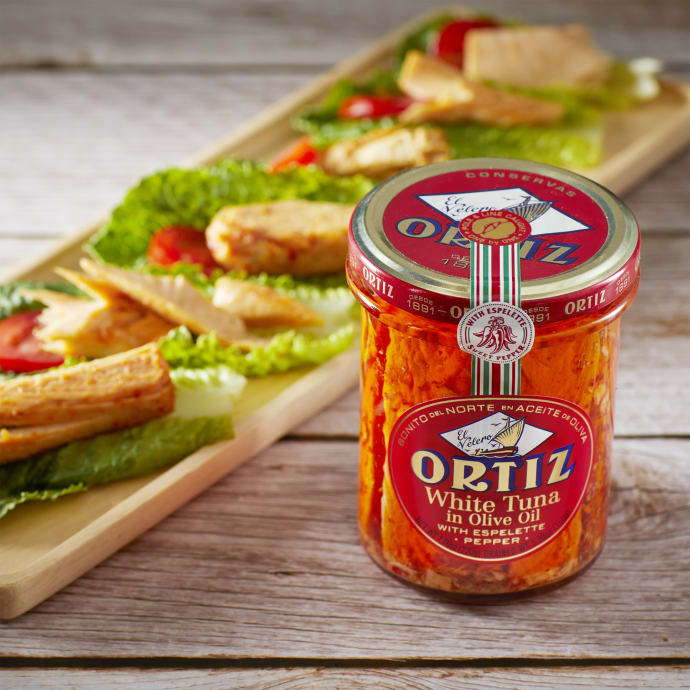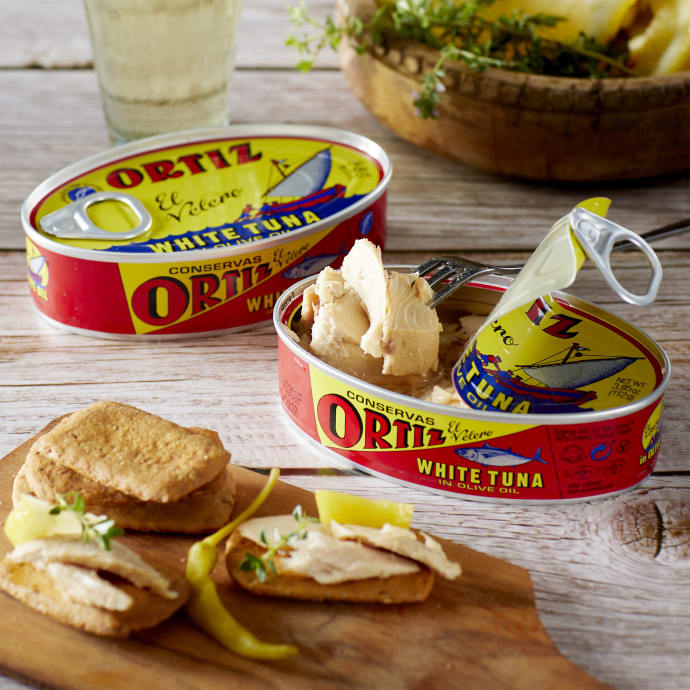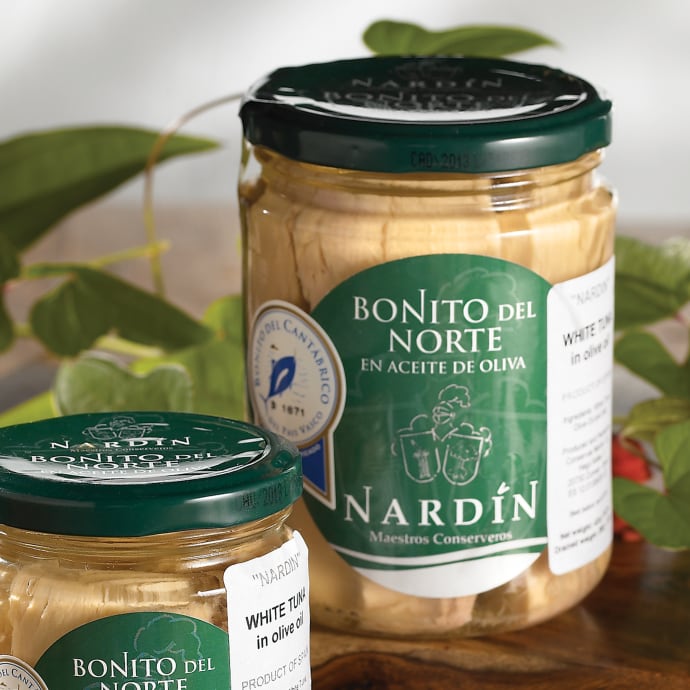Know Your Tuna
Albacore (white)
• Variety: Albacore
• Flavor: Mild and similar to white-meat chicken; can be dry.
• Best for: Sandwiches and salads where a bland flavor is desired. It's slightly more expensive than most supermarket light tunas, but less costly than premium, imported tuna.
• Nutrition: Albacore is higher in heart-healthy omega-3 fatty acids than light tuna. It's also higher in the environmental pollutant mercury, a concern for pregnant women, nursing mothers, young children and women who may become pregnant.
The fat content of albacore varies; smaller tuna caught closer to the surface, such as line-caught albacore from the Pacific Northwest, is higher in fat than larger albacore caught in deep water. Most albacore is packed in water.
Light
• Variety: Usually skipjack, a small tuna with the strongest fish taste of the tuna varieties. Can also include yellowfin. The variety of tuna typically isn't labeled on the can, although some companies do indicate if yellowfin is used because it's considered a cut above skipjack. Yellowfin is lighter in color and firmer than skipjack.
Tongol, another variety of tuna, produces firm chunks even lighter in color than yellowfin. It has a mild flavor and can be found in some natural-foods stores. American companies don't use Bonito del Norte, a firm, white-fleshed fish, but it's considered a premium white tuna in Europe. In a Cook's Illustrated test of olive oil-packed tunas, Ortiz Bonito del Norte won the top three spots; Saveur magazine and the Rosengarten Report, a food newsletter, also have singled it out as one of the best olive oil-packed varieties. Ortiz is imported from Spain and can be hard to find. Mail-order sources include www.tienda.com and www.chefshop.com.
• Flavor: More pronounced than albacore.
• Color: Ranges from nearly white to reddish. European tunas tend to be redder and meatier than U.S. supermarket varieties.
• Best for: Use water-packed in casseroles and mayonnaise-based salads, or other dishes where a milder-tasting fish is desired. For oil-packed, use when the tuna flavor should shine through, such as a nicoise salad and no-cook pasta sauces. If you use it in mayonnaise-based salads, you can use less mayonnaise than for water-packed tuna. Use the best oil-packed simply, in antipasto, tapas and simple salads.
• Nutrition: Light tuna contains omega-3s but in smaller quantities than albacore. It's low in mercury.
Ventresca
The fatty belly of the tuna, this premium cut is familiar to sushi lovers as toro. Exceptionally flavorful, meaty and buttery, ventresca fillets are a luxury best reserved for eating unadorned, with a bit of olive oil and lemon juice or alongside a salad.
Most ventresca comes from tuna imported from Italy and Spain. It's hard to find. A mail-order source is www.tienda.com, where a 4-ounce can of Ortiz Bonito del Norte ventresca goes for $12.50.
Product Primer
Understanding the different types of tuna available on the market will help you find the perfect variety for your cooking needs.
Packed in water
Most Americans choose this variety because it's lower in calories than oil-packed tuna, about 100 calories for a 3-ounce serving vs. 170 calories.
Packed in oil
The best brands of oil-packed tuna are meaty and rich. Choose tuna packed in olive oil rather than vegetable oil for the best flavor. Drain before using.
Packed in its own juices
Some tuna is cooked just once, inside the can after packing, to retain natural juices. (Most canned tuna is cooked twice, before packing and once in the can, for sterilizing.) Most of the boutique brands of Pacific Northwest albacore are available in stores only on the West Coast or by mail-order. For a list of sources, check out www.albatuna.com/Sources/Canned.htm.
Can vs. pouch
Vacuum pouches don't need draining. Many consumers think they have less of a fishy taste than canned.
Solid vs. chunk
Solid or fancy tuna is large chunks with just a few small flakes; chunk tuna contains varying sizes. Choose chunk for mayonnaise-based salads where a smoother texture is desired, tuna noodle casseroles and dips. Use solid when large chunks of tuna work best: a white bean salad, over pasta, a nicoise salad.
The stealth ingredient
Virtually all canned tuna contains vegetable broth, used as a flavor enhancer. If you want to avoid it, look for low-sodium tuna or tuna packed in olive oil, which usually doesn't contain broth, and check ingredient lists, the only place the broth is typically listed. A brand's top-of-the-line offering may not contain it, such as Starkist's Gourmet's Choice Tuna Fillet and Bumblebee's Prime Fillet Solid White Albacore in Water.













